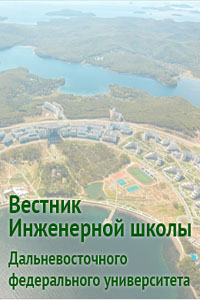Preliminary results of the study of dependence of sound velocity and attenuation on temperature in edible vegetable oils
DOI:
https://doi.org/10.24866/2227-6858/2025-1/175-180Keywords:
sound velocity and attenuation, laboratory setup, vegetable oils, quality controlAbstract
Preliminary results of the study of the dependence of sound velocity and attenuation on temperature in the range of 10–80 °C at a frequency of 2.5 MHz in soybean and sunflower edible vegetable oils are described. A description of the laboratory installation used is given. This device can also be used to study the dependence of sound velocity and attenuation on temperature in liquids, motor fuels, feed, engine and industrial oils, plastic lubricants and emulsions, including in a wider range of temperatures and at other frequencies. In the studied vegetable oils, when the temperature changes from 10 to 80 °C, the speed and attenuation of the sound decrease. After heating up to 250 °C, exposure and subsequent cooling, the attenuation of sound in them increases by 20 dB or more. An increase in attenuation can be used as a sign of overheating of vegetable oils and serve as a basis for quality control, prohibition of use in a number of culinary technologies and rejection.
References
1. McClements D.J., Povey M. Ultrasonic analysis of edible fats and oils // Ultrasonics. 1992. № 30(6). Р. 383.
2. Михайлов И.Г., Соловьев В.А., Сырников Ю.П. Основные проблемы современной молекулярной акустики // Акустический журнал. 1958. Т. IV, № 3. С. 211–222.
3. Javanaud C., Rahalkar R.R. Velocity of sound in vegetable oils // Lipid/Fett. 1988. Vol. 90, № 2. Р. 73–75. DOI: https://doi.org/10.1002/lipi.19880900208
4. Rekha E., Jeevakumar R. Variation of ultrasonic velocity and a few acoustic parameters as a function frequency in some commonly used edible oils // International Journal For Multidisciplinary Research. 2024. Vol 6. Iss. 3. DOI: https://doi.org/10.36948/ijfmr.2024.v06i03.20438
5. Ali S.K.M., Ali B. Velocity of ultrasounds in commonly used vegetable oils at low frequencies // International Journal of Science, Environmemt and Technology. 2014. Vol. 3, № 5. Р. 1803–1809.
6. Михайлов И.Г., Полунин В.М. Скорость ультразвука в некоторых жидкостях в зависимости от различных параметров состояния // Акустический журнал. 1974. № 2. С. 68–73.
7. Таблица стандартных справочных данных. Госстандарт России. ГСССД190-2000. М.: Изд-во стандартов, 2000.
Downloads
Published
Issue
Section
License
Copyright (c) 2025 Far Eastern Federal University: School of Engineering Bulletin

This work is licensed under a Creative Commons Attribution 4.0 International License.

